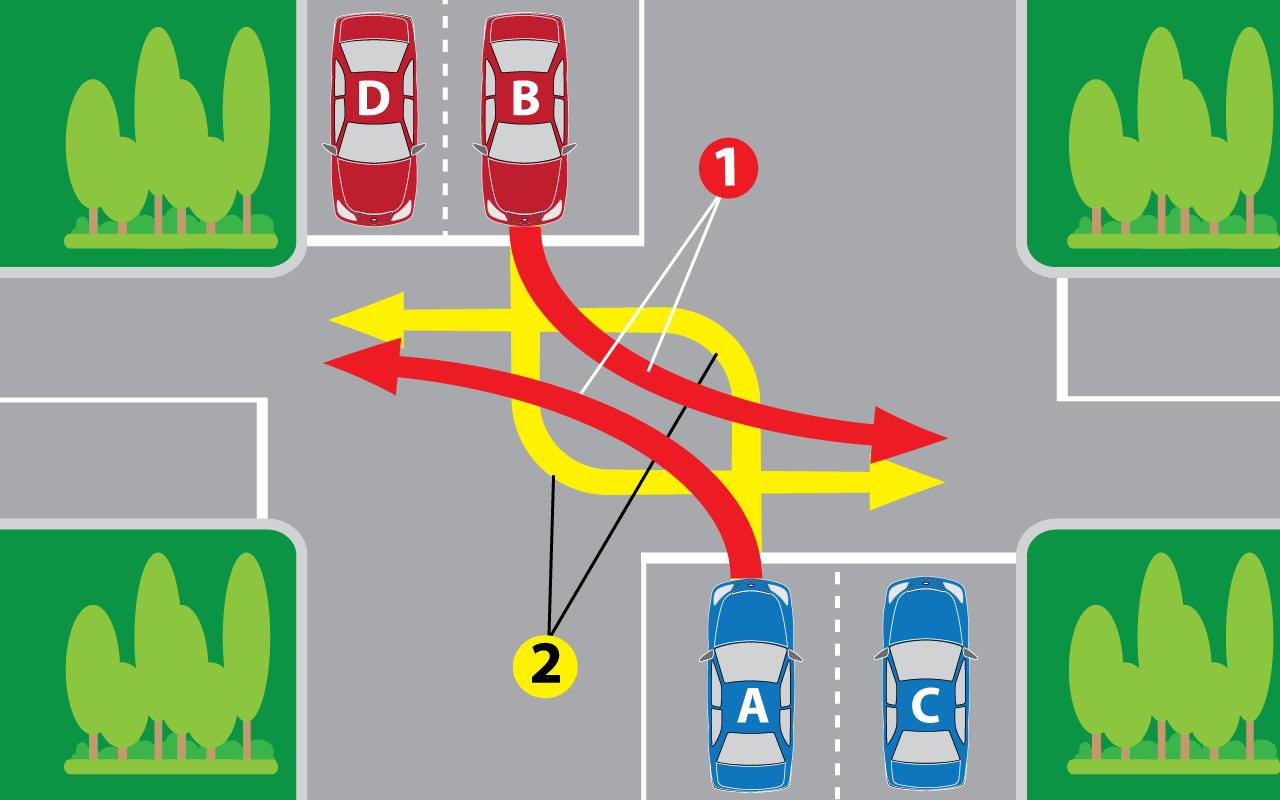
How to safely turn left
Driving a car can lead to dangerous situations, such as turning left into oncoming traffic. Luckily, modern cars are equipped with turn signals to notify drivers around you of your intention to turn. Traffic…
Driving a car can lead to dangerous situations, such as turning left into oncoming traffic. Luckily, modern cars are equipped with turn signals to notify drivers around you of your intention to turn. Traffic lights and signs also make the process easier and safer.
Ultimately, your safety comes down to knowing the rules of driving, the capabilities of your vehicle, and your understanding of how to use the tools provided to you, depending on the situation.
If you learn how to turn left using your vehicle's turn signals and become familiar with the hand signals you can use in the event of a turn signal failure, you can be prepared and feel more confident on the road.
Method 1 of 2: Turn left using the turn signal
The easiest and most common way to turn left is to use your vehicle's turn signal. This method involves stopping to make sure the path is clear, turning on the left signal, and then completing the turn when you are sure the path is safe. It is important to follow these safe driving rules, especially when driving in oncoming traffic.
Step 1: Come to a complete stop. Make sure you come to a complete stop before turning left. Stop in the appropriate lane by turning left. Many roads have at least one, and sometimes several, left turn lanes.
- Attention: In all cases, make sure you signal your intention to turn left. This informs the drivers around you that you are planning to turn.
Step 2: Turn on the left turn signal. If you haven't already, turn on the left turn signal by pushing the lever down.
While this may seem obvious to experienced drivers, novice drivers can sometimes forget to turn on their turn signals.
- Functions: Be sure to replace burned out or broken turn signal lights. Some vehicles are telling you that the turn signal is not working properly by flashing faster than normal. If you notice a change in how your turn signal works, such as speeding up, have your turn signals checked by a professional to make sure they are still working properly.
Step 3: Make a left turn. Once you've stopped and made sure it's safe to drive, turn left.
When turning left, especially at a one-way stop, be sure to look to the right to see if there is oncoming traffic. If so, wait for it to pass and turn only when there are no more vehicles approaching.
- A warning: Turn the steering wheel carefully, being careful to stay in the turn lane. Many accidents occur because drivers enter another lane for a turn and crash into a vehicle that is already in that lane.
Step 4: Align the wheels. Align the wheels after completing the turn and drive straight again. The turn signal should turn off automatically after turning. If not, press the lever up with your hand to turn it off.
- Functions: If you are at a one-way stop moving from a side road to a main street where there is no stop, look to your left to see if there is oncoming traffic in that direction. Always make sure you look left, look right, and then look left again before turning. This way you make sure both lanes are clear before turning and you check the left one to make sure it's still clear.
Method 2 of 2: turn left with hand signal
Sometimes your turn signal may stop working. In this case, use the correct hand signals until you can fix the turn signal.
Although the hand signals to use when driving are listed in the driving manuals published in many states, most drivers have probably forgotten about them since they first got their license.
Step 1: Stop. Stop your vehicle completely at a traffic light, sign, or section of road where you need to turn left.
- Attention: Unless you have a left turn signal telling you it's your turn to drive, you should always stop to check for oncoming traffic. Even with a left arrow at a traffic light, it's a good idea to slow down a bit and make sure no cars are running a red light across the road.
Step 2: Extend your hand. Extend your arm out of the driver's side window, keeping it parallel to the ground.
Keep your hand in this position until it is safe to continue the turn. Once it is safe to turn, move your hand back out the window and place it back on the steering wheel to complete the turn.
Step 3: Turn left. Once you've communicated your intention and are sure other drivers know you're turning left, make sure there's no oncoming traffic and then turn left.
Make sure you stay in the correct lane after making the turn. Some drivers tend to shift into other lanes when turning, which can lead to an accident.
Left turning is safe and easy if you follow proper driving rules. The turn signal is an integral part of your vehicle that needs to be checked and serviced regularly.
If your turn signals have burned out or stopped working, ask a certified mechanic, such as from AvtoTachki, to replace your turn signal bulbs.
